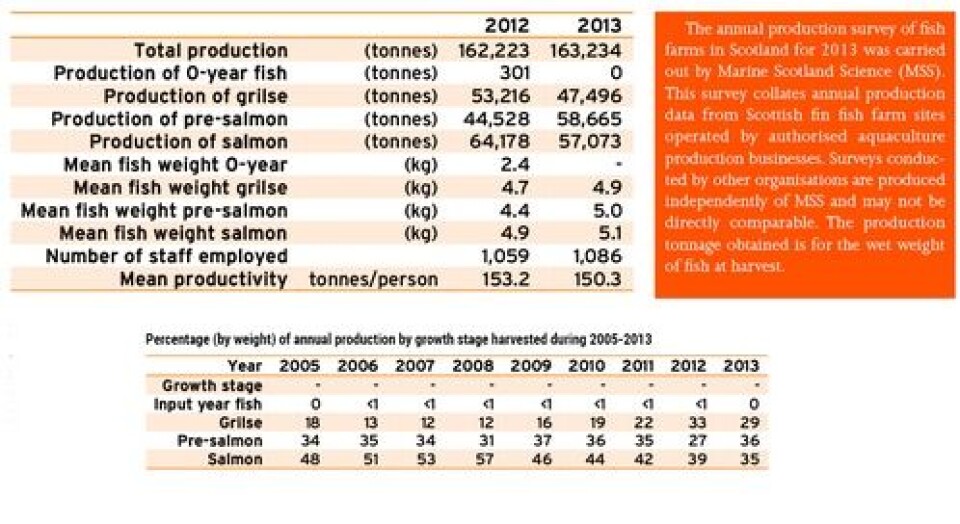Scottish Fish Farm Production Survey 2013:Highest production level in a decade
According to the Scottish Fish Farm Production Survey 2013 report, 163,234 tonnes of farmed Atlantic salmon was produced in 2013 - a 0.6 per cent increase on the 2012 production total. This follows a 2.7 per cent increase in 2012 and is the highest recorded production in a decade. The survey shows decreases in the production of grilse and salmon, but an increase in the production of pre-salmon. There was however a drop in smolt and ova production last year.
Still some way to growth target The growth target for the industry is to increase production to 210.000 tons by 2020 – an increase of more than 45000 tons from the current production. However, according to the report, projected production for 2014 suggests a slight decrease in both salmon and smolt production.
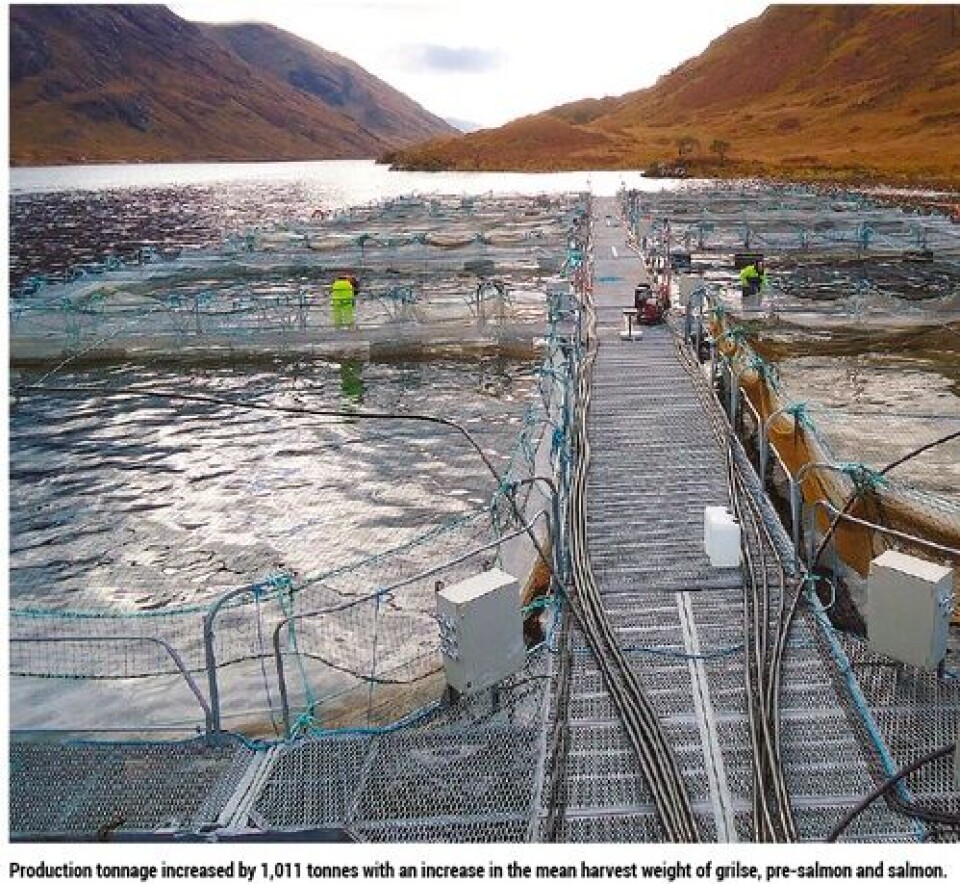
Commenting on the increase in production in 2013, the Environment and Climate Change Minister Paul Wheelhouse revealed that Scotland’s Aquaculture sector is now estimated to be worth £1.75 billion to the Scottish economy overall. “If sustained, the sector, is well on its way to generating over £2 billion annually for the Scottish economy and supporting 10,000 jobs by 2020 many of which are in some of Scotland’s most remote and rural communities,” he said.
Decrease in ova and smolt
Although overall salmon production in Scotland rose, there was a decrease in smolt and ova production in 2013. The production of ova decreased by 0.6 million in 2013, but the number of ova laid down to hatch increased by 3.4 million. A small number of ova were exported and imports of ova increased in 2013. The number of smolts produced decreased to 40.5 million, a drop of 8.7 per cent (3.8 million) compared to 2012. Data for staffing and productivity in 2013 are shown, with a total of 285 fulltime and part time staff, a decrease by 43. Productivity increased to 142,000 fish per person. However, there are uncertainties with these data due to consolidation within the industry. Projections suggest that slightly fewer smolts will be produced in 2014, followed by an increase in 2015. Production survey information was collected from all 27 companies actively involved in the freshwater production of Atlantic salmon, farming 102 active sites. This figure represents the entire freshwater industry operating in Scotland. The principal types of facility used for the production of smolts in fresh water are cages or tanks and raceways. In terms of volume, cage capacity increased by 23,000 m³ and tank and raceway capacity increased by 13,000 m³. This resulted in a net increase in volume of 36,000 m³ available for the production of smolts in Scotland during 2013. The average stocking densities of cages decreased from 77 to 56 fish per m³ in 2013 compared to 2012 while densities in tanks and raceways decreased from 342 to 305 fish per m³.

Ova production In 2013, nearly 57 million ova were stripped, a slight decrease compared to 2012. The number of ova laid down to hatch was 66.6 million, an increase of over three million (5.3 per cent) on the 2012 figure. The majority of the ova (62.1 per cent) were derived from foreign sources, this being an increase of 6.6 million (19.1 per cent) on the 2012 figure. This highlights the trend towards using foreign ova sources. The main sources of imported ova were Norway - 72.3 per cent of total ova imported - and Northern Ireland, which supplied 22.1 per cent of total ova imported. Supplies derived from GB broodstock decreased by 3.3 million this being an 11.5 per cent decrease on the 2012 figure. No ova from GB wild broodstock were laid down in 2013. However, in previous years the ova derived from wild stocks were generally held and hatched for wild stock enhancement by the aquaculture industry in cooperation with wild fisheries managers. In 2013, 650,000 ova were exported. Parr and smolt exports increased by 635 per cent on the 2012 figure to 404,000. In 2013, the number of freshwater and seawater sites holding broodstock increased to eight. The number of sites holding broodstock in any one year can be variable, as can be seen from the previous years’ figures, which indicate no obvious trend. A total of 5,683 fish were stripped, yielding 56.9 million ova, giving an average yield of 10,021 ova per fish.
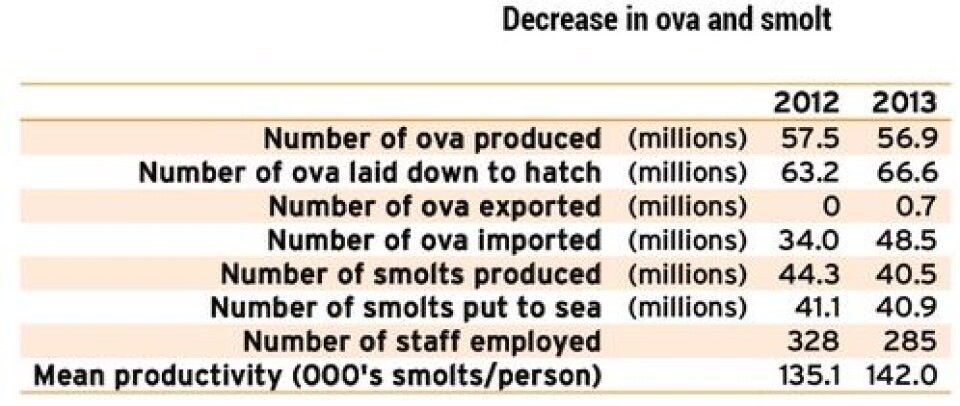
Smolt The number of sites producing smolts in 2013 was 58. The number of sites producing less than 101,000 smolts has increased by five to nine sites, while there has been a decrease of nine in the number of sites producing between 101,000 and one million smolts to 35 sites. The number of sites producing in excess of one million smolts per year has increased by one to 14 In 2013, the North West and the West were the main areas where ova were laid down to hatch. The North West, the West and the Western Isles were the main smolt producing areas. The greatest number of staff was employed in the North West region. The total number of smolts put to sea in 2013 was 40.9 million – a slight decrease from 2012. This smolt input comprised S1s (52.6 per cent), S½s (47.1 per cent) and a small number of S1½s (0.3 per cent). Three percent of the smolts stocked to Scottish salmon farms were sourced from outwit Scotland. This was a decrease of 1 per cent compared with the proportion observed in 2012. Farmers estimate putting 39.9 million smolts to sea in 2014. The ratio of ova laid down to hatch to smolts produced in 2013 was greater than in 2012.
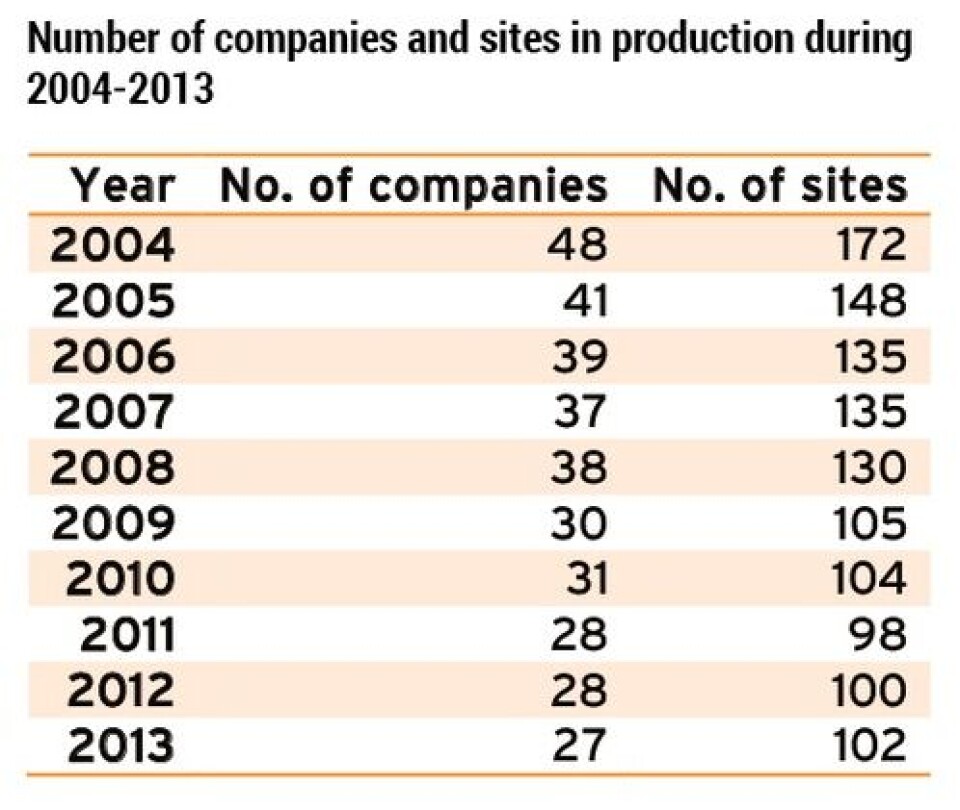
Decreased survival rate In 2011, the last year for which survival can be calculated, the survival rate from smolt input to harvest decreased to 77 per cent. Of the 2012 year class, 52.0 per cent of the input has been harvested, 1.4 per cent higher than the average harvest of fish one year after input in the 2011 year class. In 2013, there was no harvest of fish from the 2013 smolt input. This was a decrease compared with the proportion of fish harvested from the same year class in 2012. Vaccines were used to provide protection against furunculosis, infectious pancreatic necrosis (IPN), enteric redmouth disease (ERM), vibriosis and salmonid alphavirus (SAV). The majority of fish were vaccinated against furunculosis and IPN, with smaller numbers of fish being vaccinated against ERM, vibriosis and SAV. A total of 47.5 million fish were vaccinated across 63 sites. As for escapes, there were two incidents involving the loss of 16,646 freshwater farmed Atlantic salmon in 2013.
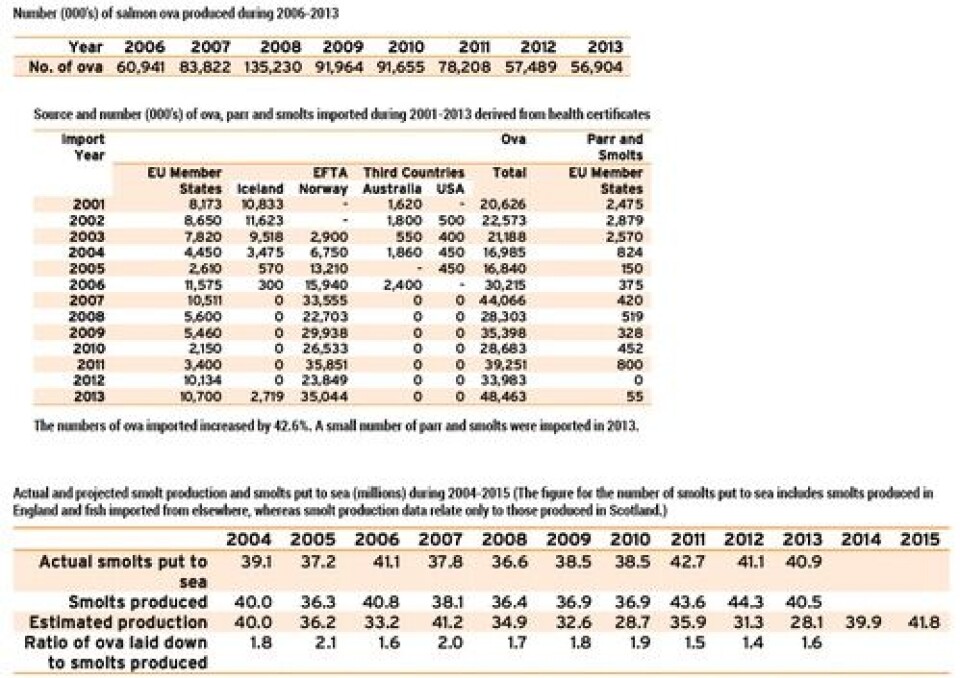
Atlantic salmon production The number of companies authorised and actively producing Atlantic salmon in 2013 was 15, a decrease of one from 2012. Overall, production was dominated by seven companies in 2013, which between them accounted for over 98% of Scotland’s farmed Atlantic salmon production. Six companies remained active and authorised, although not producing salmon for harvest in 2013. This continued the trend of Atlantic salmon production becoming concentrated within fewer companies. These 21 companies had 257 registered active sites, although not all these sites produced fish for harvest in 2013. Sites with no production dropped by three, whilst the number producing 1 to 500 tons remained the same at 42. The number of sites producing over 500 tons increased by three to 103. The trend towards concentrating production in larger sites was maintained with 78% of production being concentrated in the sites producing over 1,000 tonnes per annum.
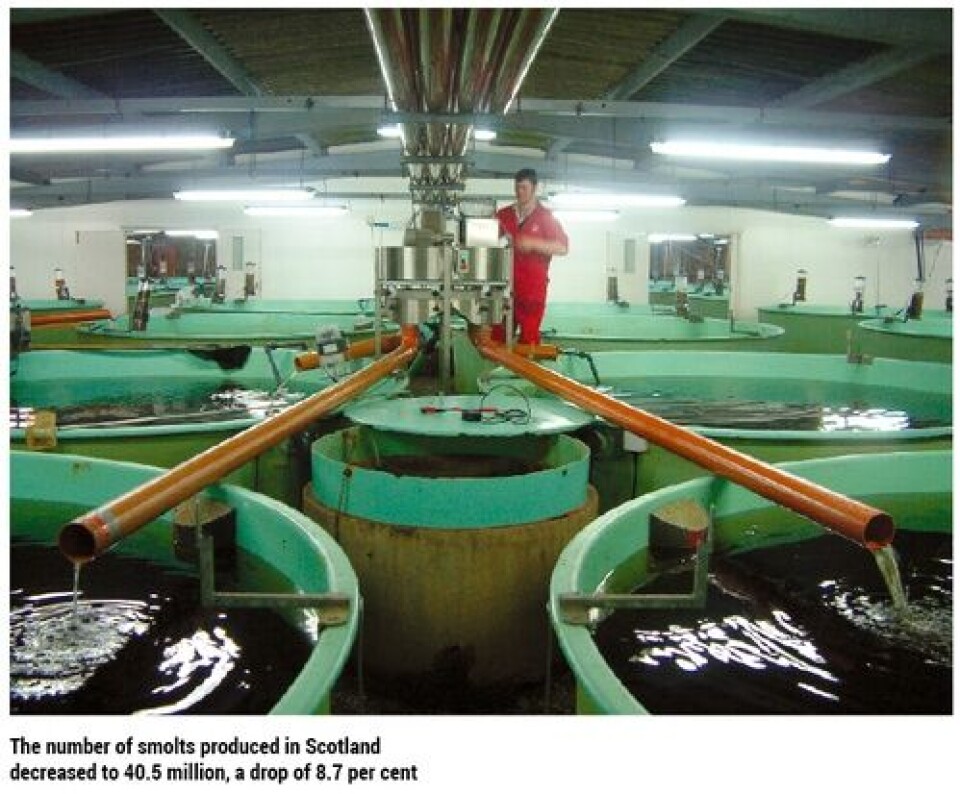
Of the 257 seawater cage sites, 43 farms were fallow for the entire year whilst 163 farms were fallow for a variable period. There were 51 sites that did not fallow in 2013. The vast majority of fish were produced in seawater cages. There were 34 tonnes of production from seawater tank sites in 2013. This reflects the continued high installation and running costs incurred in operating seawater tank systems. Most seawater tank capacity has been re-deployed for the production of other species of marine fin fish or salmon broodstock. Sea cage capacity increased by 1,175,000 m3 during 2013 and the number of sea cage sites in production decreased by two. Production efficiency in sea cages, measured as the ratio of fish weight in kilograms produced per cubic metre, decreased to 8.6 kg/m3. Of the 253 active Atlantic salmon seawater cage sites in 2013, eight had organic certification producing 5,207 tonnes. This is the fourth year that data on organic production has been reported. Production tonnage increased by 1,011 tonnes with an increase in the mean harvest weight of grilse, pre-salmon and salmon. There were no 0-year fish harvested in 2013.
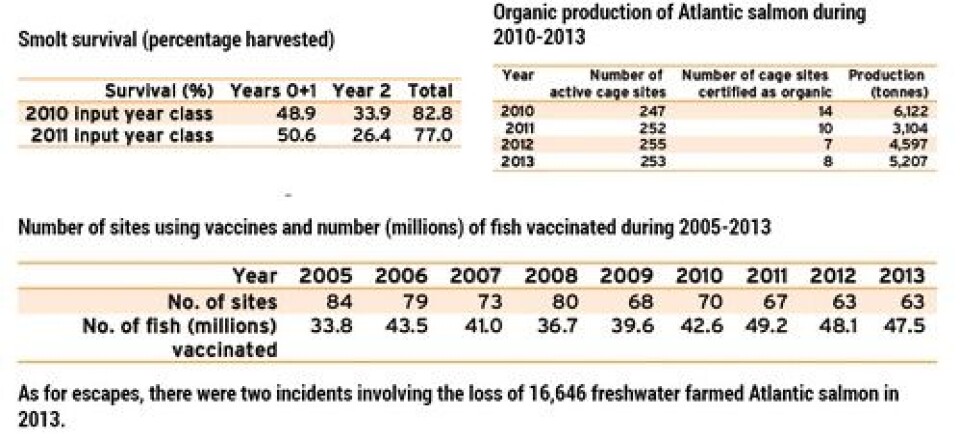
In 2013, the total number of staff employed in salmon production was 1,086, an increase of 27 compared with 2012. The staffing figures collected refer specifically to the production of Atlantic salmon and do not include figures for staff involved with processing or marketing activities. Mean productivity decreased from 153 to 150.3 tonnes per person. The greatest productivity of 247 tonnes per person was achieved in the companies producing 401-700 tonnes. The least productivity of two tonnes per person was from the companies producing the smallest tonnages. The survey shows decreases in the production of grilse and salmon, but an increase in the production of pre-salmon. There were four incidents involving the loss of a total of 9,709 fish from seawater Atlantic salmon sites in 2013. There were four additional reported incidents where the companies confirmed there was no loss of fish.
